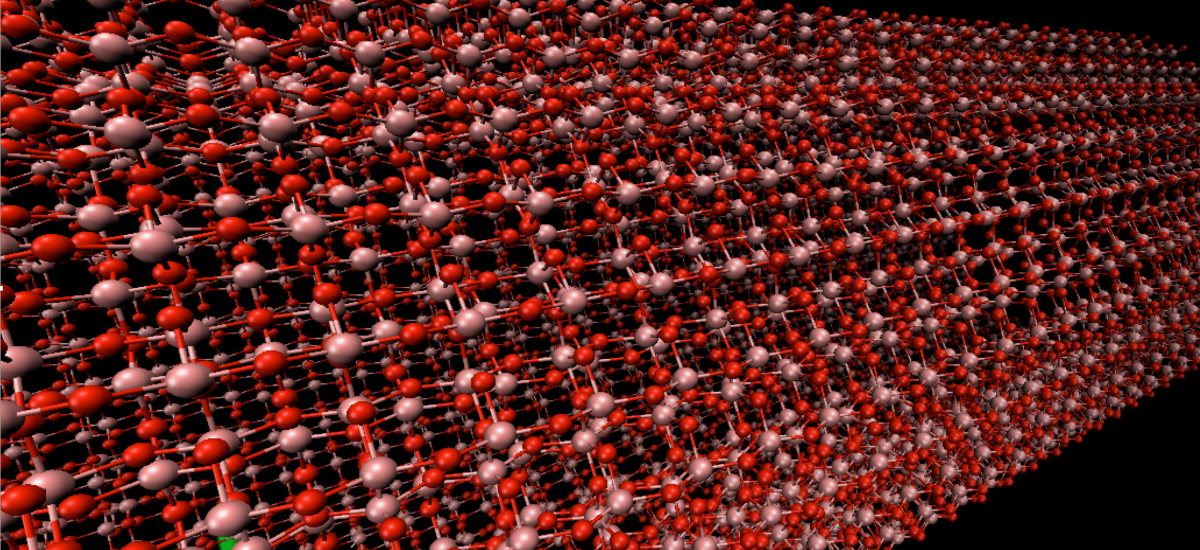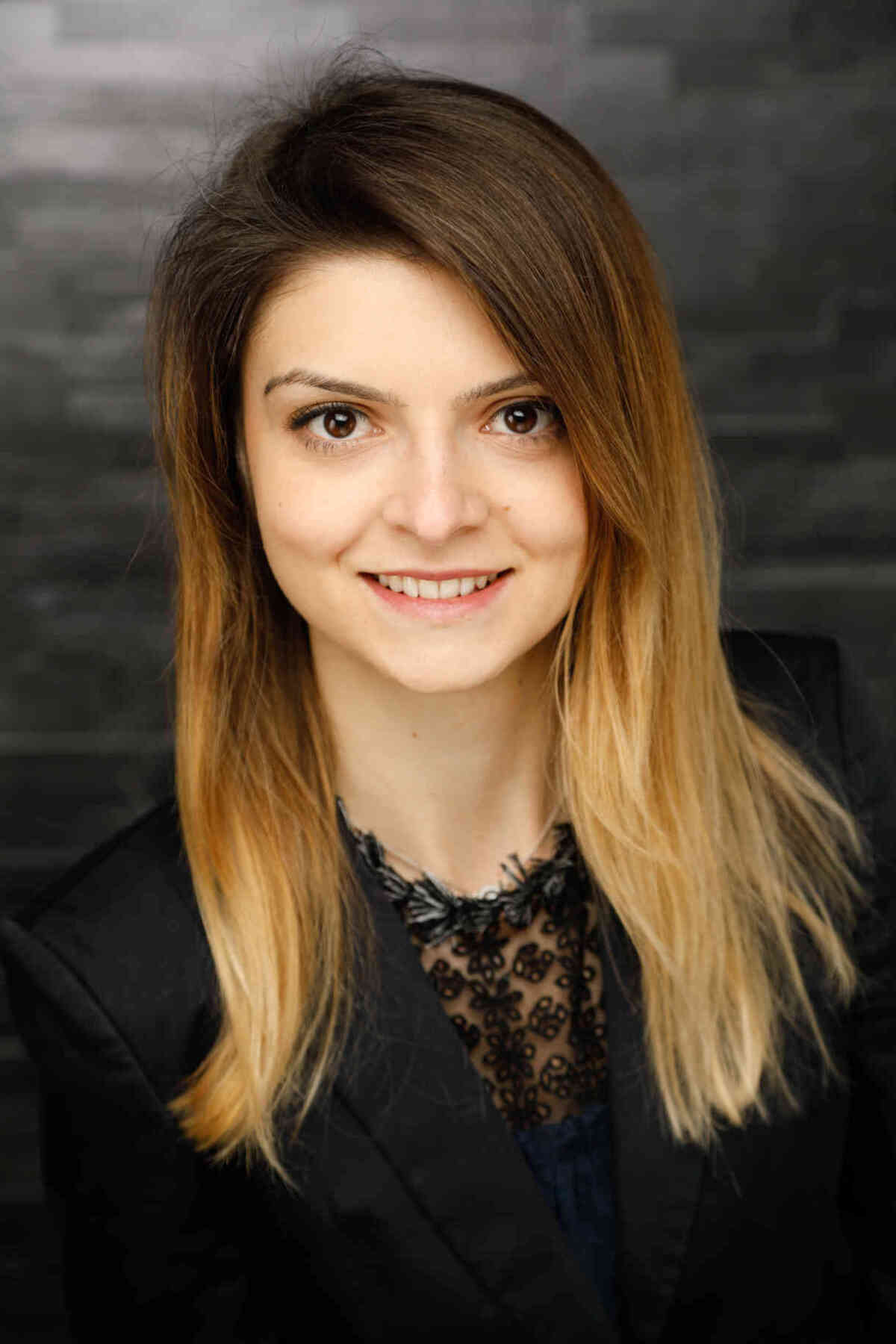News 2019
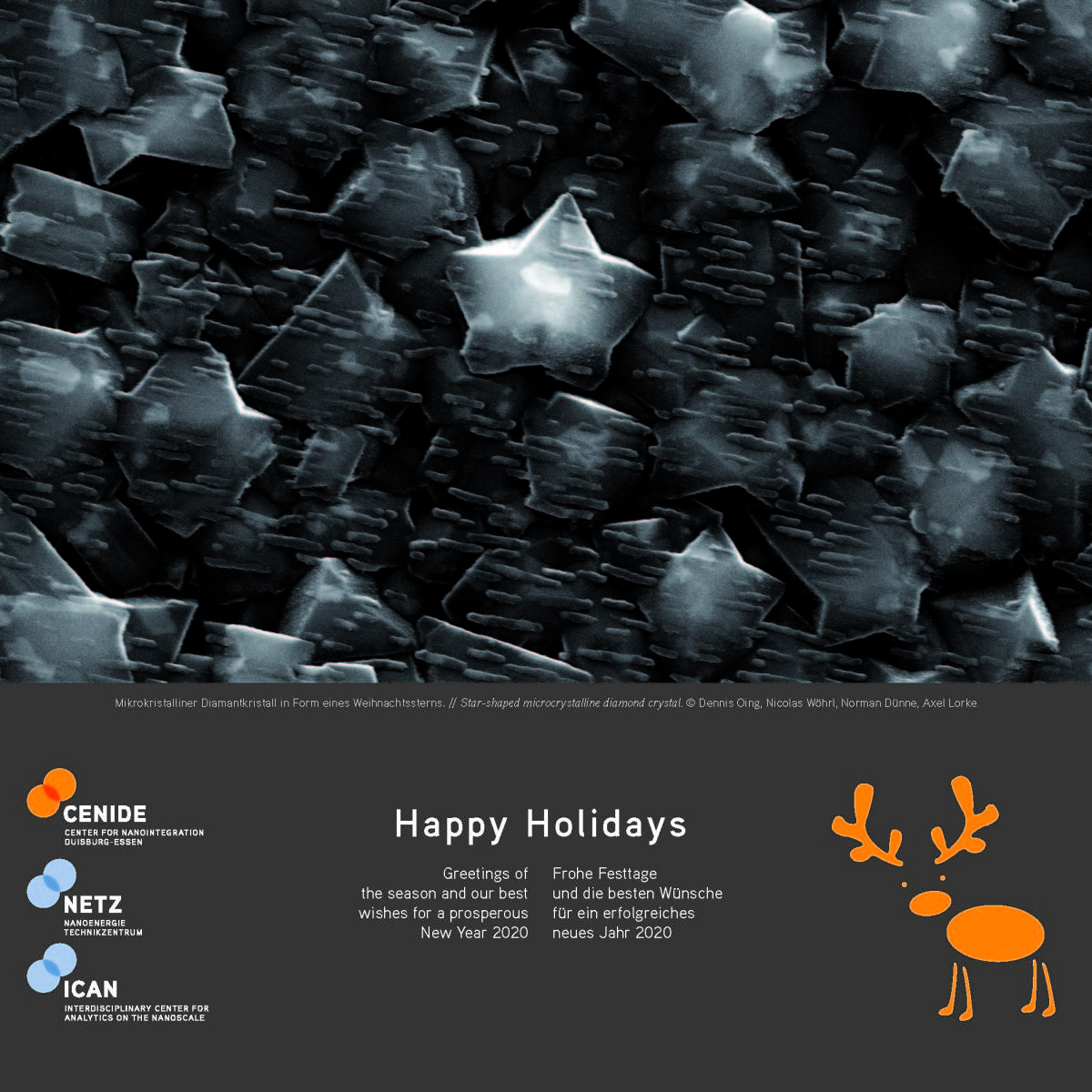
Happy HolidaysChristmas greetings
Greetings of the season and our best wishes for a prosperous New Year 2020!
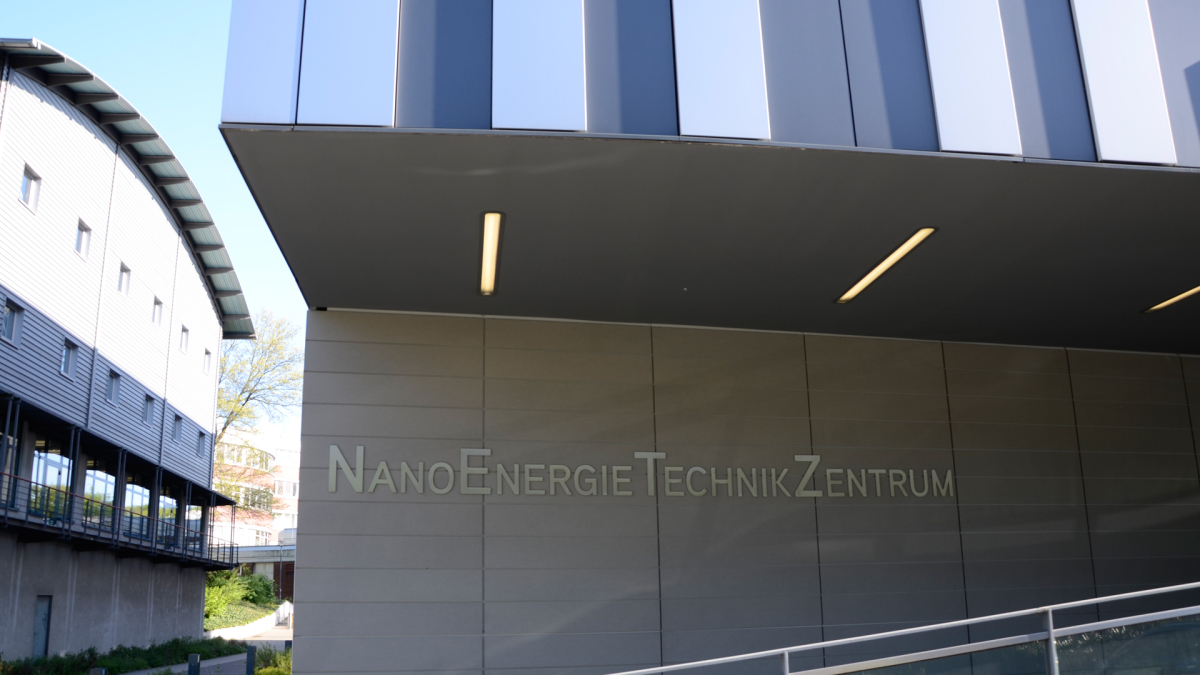
05.12.2019Workshop: Interfacial Solvent in Electrochemistry
On 5th of Decemer 2019, AGEF and SFB/TRR 247 hosted a joint workshop on "Interfacial Solvent in Electrochemistry" in Duisburg, at the NETZ building of the University Duisburg-Essen. AGEF is an association of electrochemistry research institutions in North Rhine-Westphalia.
The program can be found here.
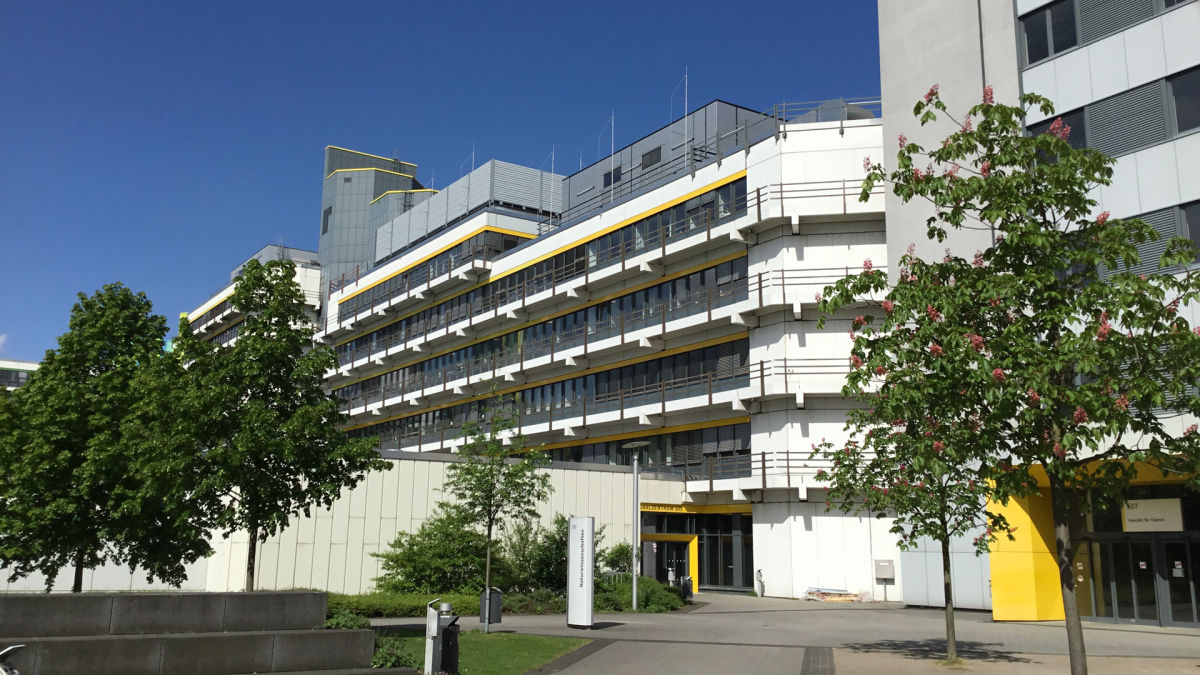
26.11.2019, 1-3 pmCluster meeting "Characterization of Oxygen Vacancies in Cobalt Spinel"
The cluster meeting on "Characterization of Oxygen Vacancies in Cobalt Spinel" took place on Tuesday, 26.11.2019 from 1 pm to 3 pm in Essen, Room S07 S02 D48.
26.11.2019Frank Neese Belongs to the Highly Cited Researchers of the Year 2019
> more about: Press release MPI für Kohlenforschung, 26.11.2019
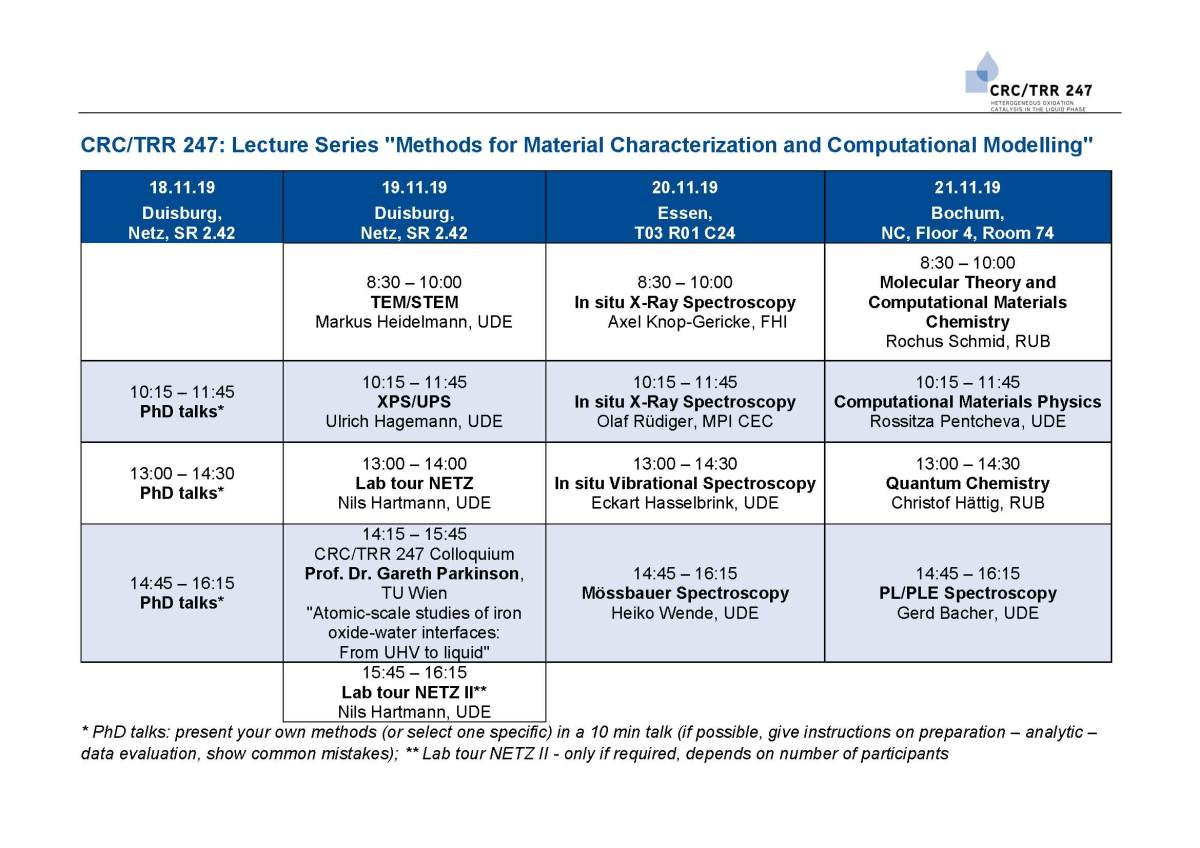
18.-21.11.2019UnOCat Lecture Series "Methods for Material Characterization and Computational Modelling"
In our first lecture series, there are different talks about catalyst preparation, characterization, data evaluation as well as theoretical modelling.
More information can be found here.
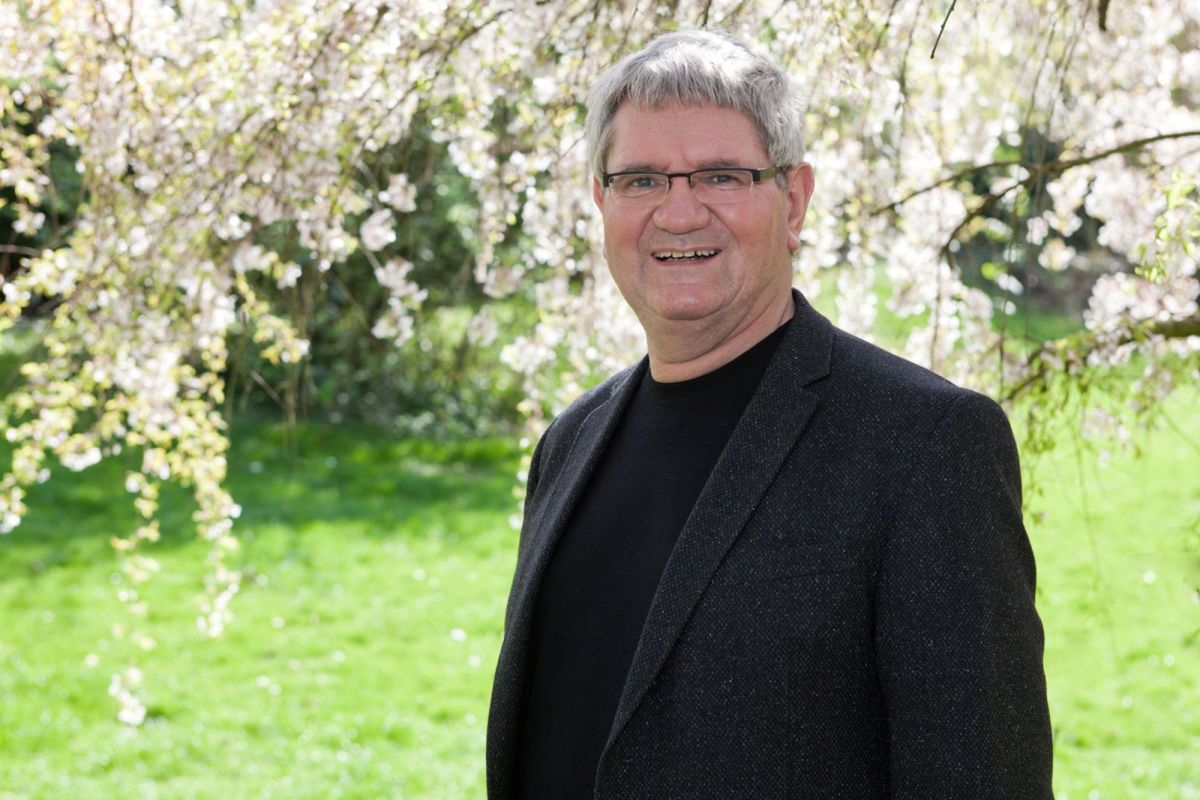
16.11.2019Cultural Award of Eduard Rhein Foundation to Robert Schlögl
On 16 November, Prof. Robert Schlögl, Director of the department 'Heterogeneous Reactions' at MPI CEC, was awarded the Eduard Rhein Foundation Culture Prize. The €10,000 prize is awarded to Prof. Schlögl "for his outstanding scientific achievements and his exceptional expertise in communicating scientific findings to the broader public as well as into the policy arena".
The statement of the jury states that, „Robert Schlögl is not only an outstanding scientist with a worldwide reputation far beyond the borders of his respective discipline; he is also an excellent communicator of scientific themes – Schlögl is, so to speak, a true "ambassador of science"." (Source: Eduard-Rhein-Stiftung)
The jury hopes that the award will highlight the importance of public science communication and believes that Robert Schlögl is a role model for many other scientists with regard to social responsibility, because interaction and discussion with the general public is of enormous importance.
> more about: Press release MPI CEC, 15.11.2019
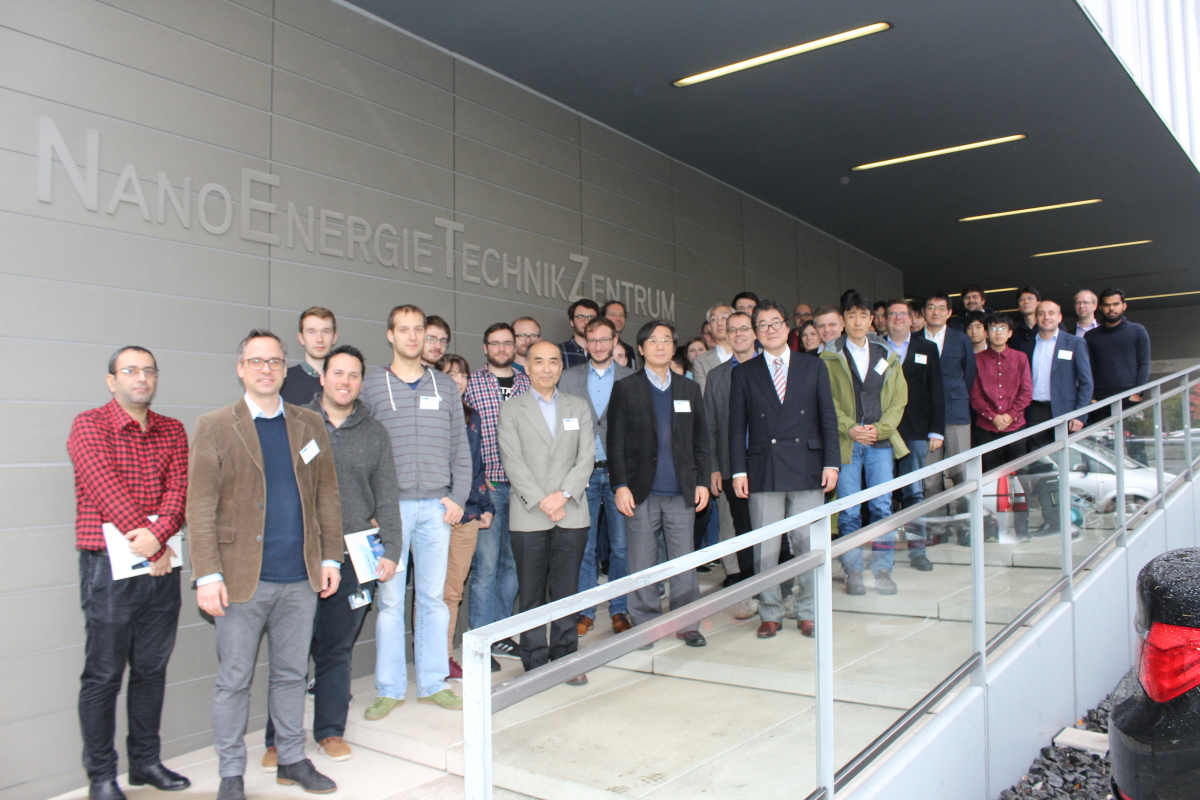
04.-05.11.2019Joint Symposium "Nanomaterials for Energy Applications"
Together with CENIDE and the University of Tsukuba, CRC/TRR 247 organized the joint symposium on "Nanomaterials for Energy Applications" at NETZ in Duisburg.
More information can be found here.
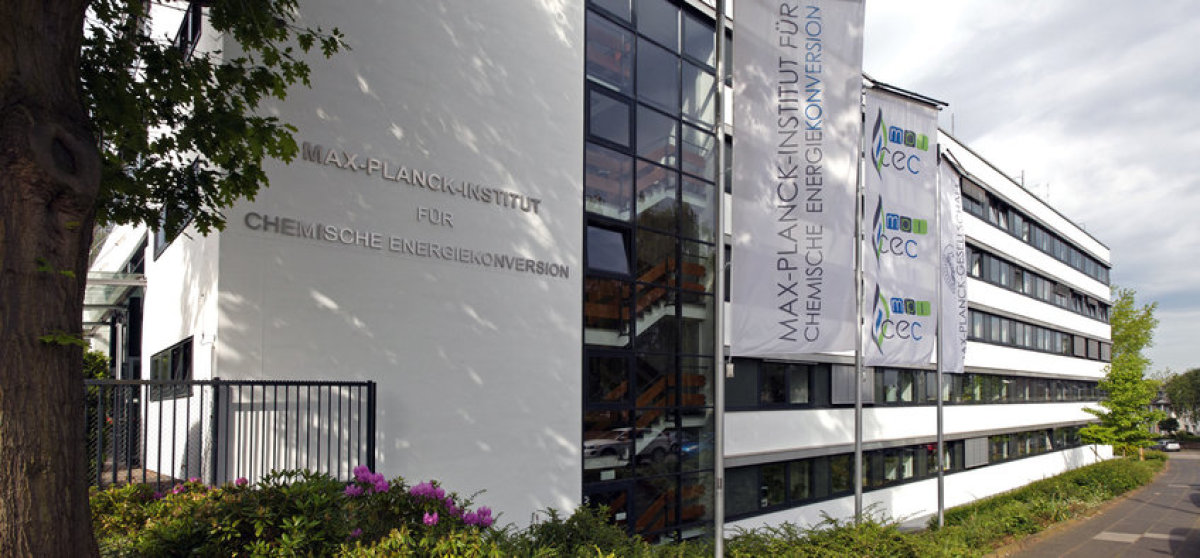
16.10.2019Meeting on "Perovskites in Catalysis"
On 16th of October, we reviewed the current stage of research on perovskites in catalysis.
The meeting took place in Mülheim at the MPI CEC . The agenda is available here.
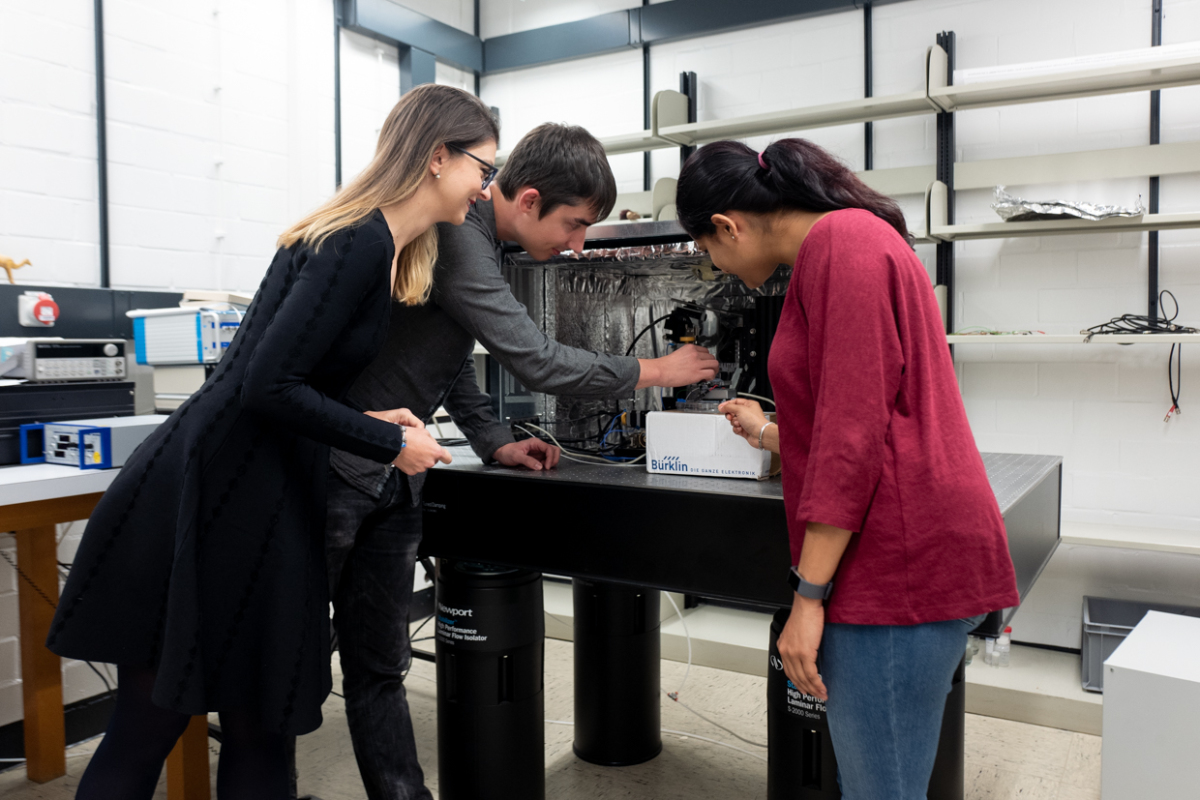
Publication alertScanning electrochemical cell microscopy investigation of single ZIF‐derived nanocomposite particles as electrocatalysts for oxygen evolution in alkaline media
Chemists have developed a new method with which they can characterise individual noble-metal-free nanoparticle catalysts. The particles could be a cheap alternative to precious metal catalysts for obtaining hydrogen from water by means of electrolysis.
So far, there are few techniques available to measure the catalytic activity of individual or a few nanoparticles. “The currents that have to be measured are extremely small, and one has to find single or few nanoparticles in order to measure them reproducibly,” explains Prof. Wolfgang Schuhmann. The research team showed that such analyses are also possible with high throughput – namely with scanning electrochemical cell microscopy.
Original publication
Tarnev, T., Aiyappa, H.B., Botz, A., Erichsen, T., Ernst, A., Andronescu, C., Schuhmann, W.: Scanning electrochemical cell microscopy investigation of single ZIF‐derived nanocomposite particles as electrocatalysts for oxygen evolution in alkaline media, Angewandte Chemie International Edition, 2019, 58, 14265-14269, DOI: 10.1002/anie.201908021
> more about: Press release Ruhr-University Bochum, 04.10.2019
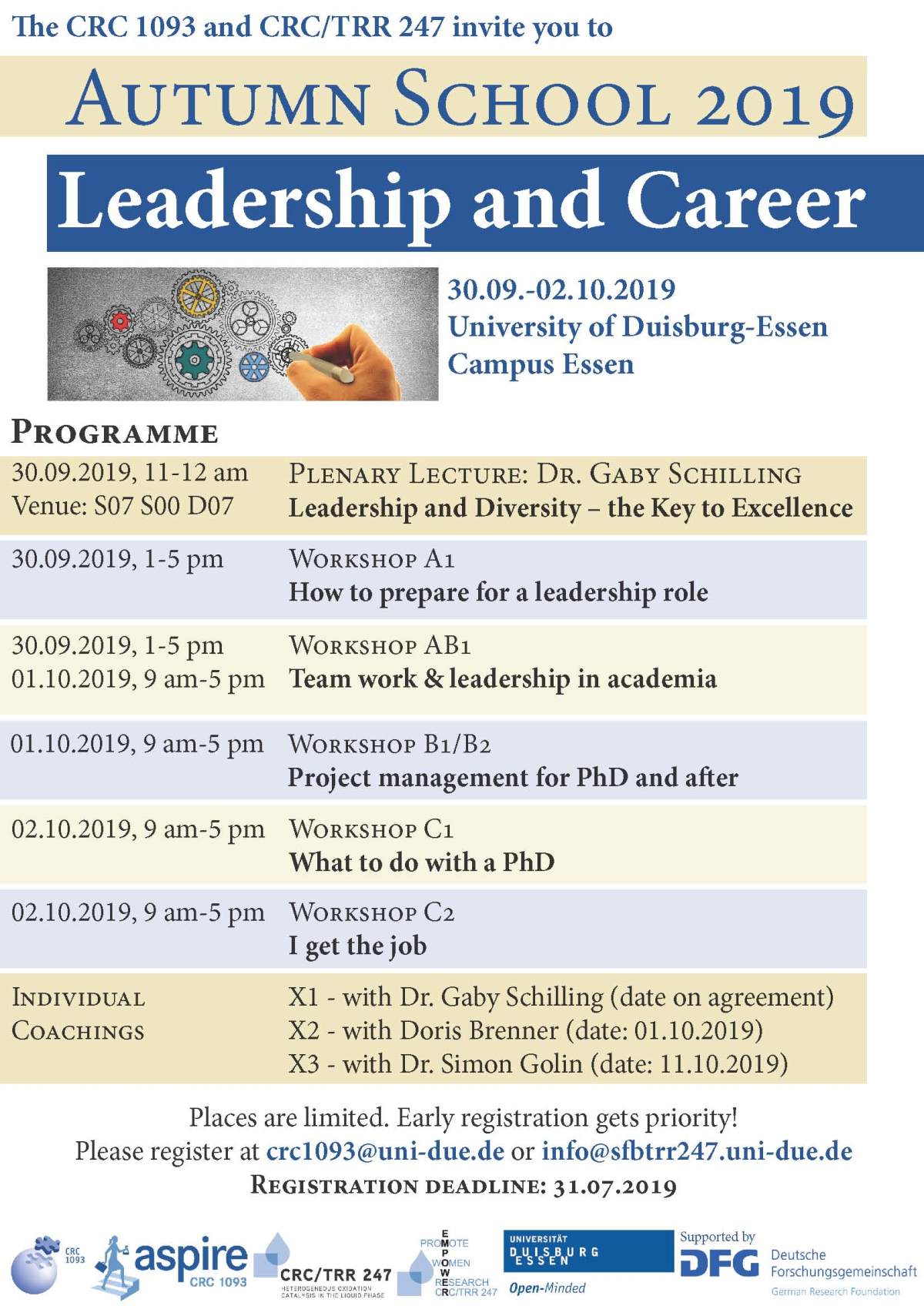
30.09.-02.10.2019Autumn School 2019 on “Leadership and Career“
The autumn school is organised by CRC/TRR 247 and CRC 1093.
There are a keynote speech of Dr. Gaby Schilling about „Leadership and Diversity – the Key to Excellence“, several workshops and individual coachings about leadership, project management and career planning.
The programme is available here.
27.09.2019Twitter: SEC lab MPI CEC
Ready for our second day of our first year workshop for the CRC/TRR 247 heterogeneous oxidation catalysis in the liquid phase. Great scientific discussions yesterday in a collaborative environment. pic.twitter.com/eDtI8iLW09
— Spectroelectrochemstry lab MPI-CEC (@SECLab_MPI_CEC) 27. September 2019
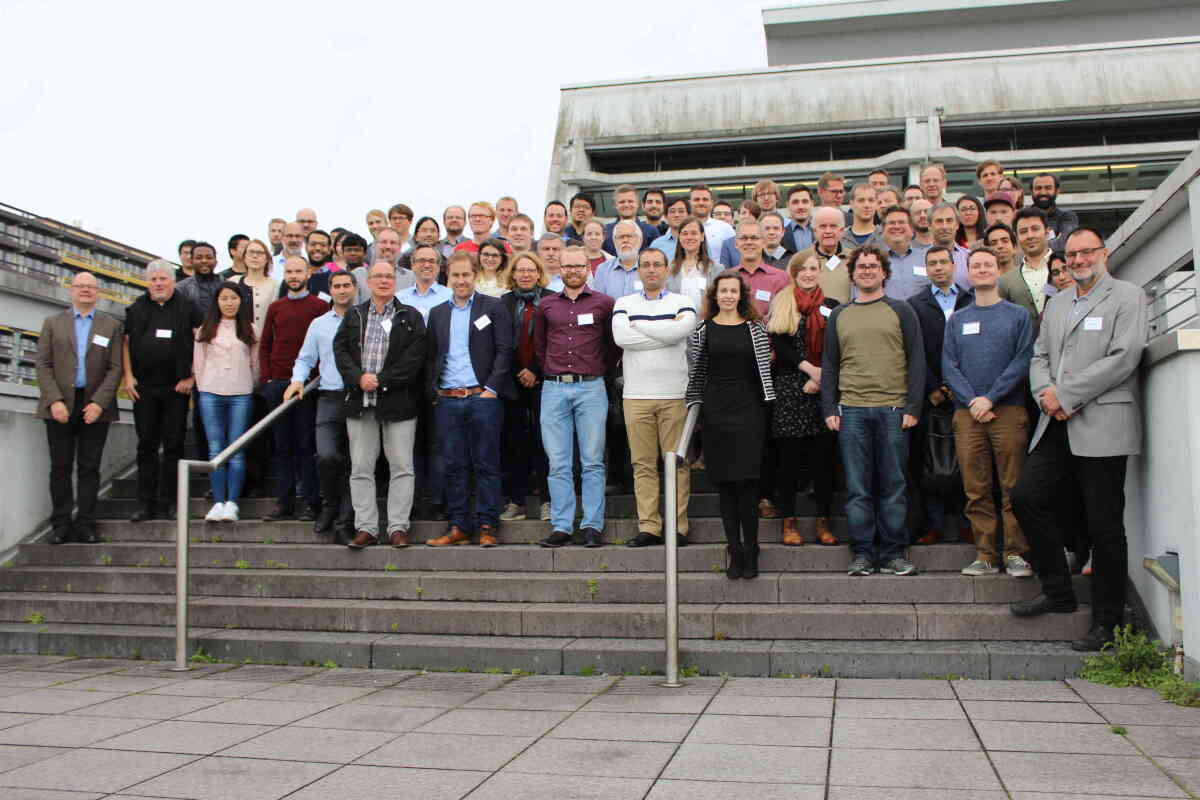
26./27.09.2019Annual CRC/TRR 247 meeting at RUB
Our annual meeting took place at the Ruhr-University Bochum on 26th/27th of September.
More information can be found here.
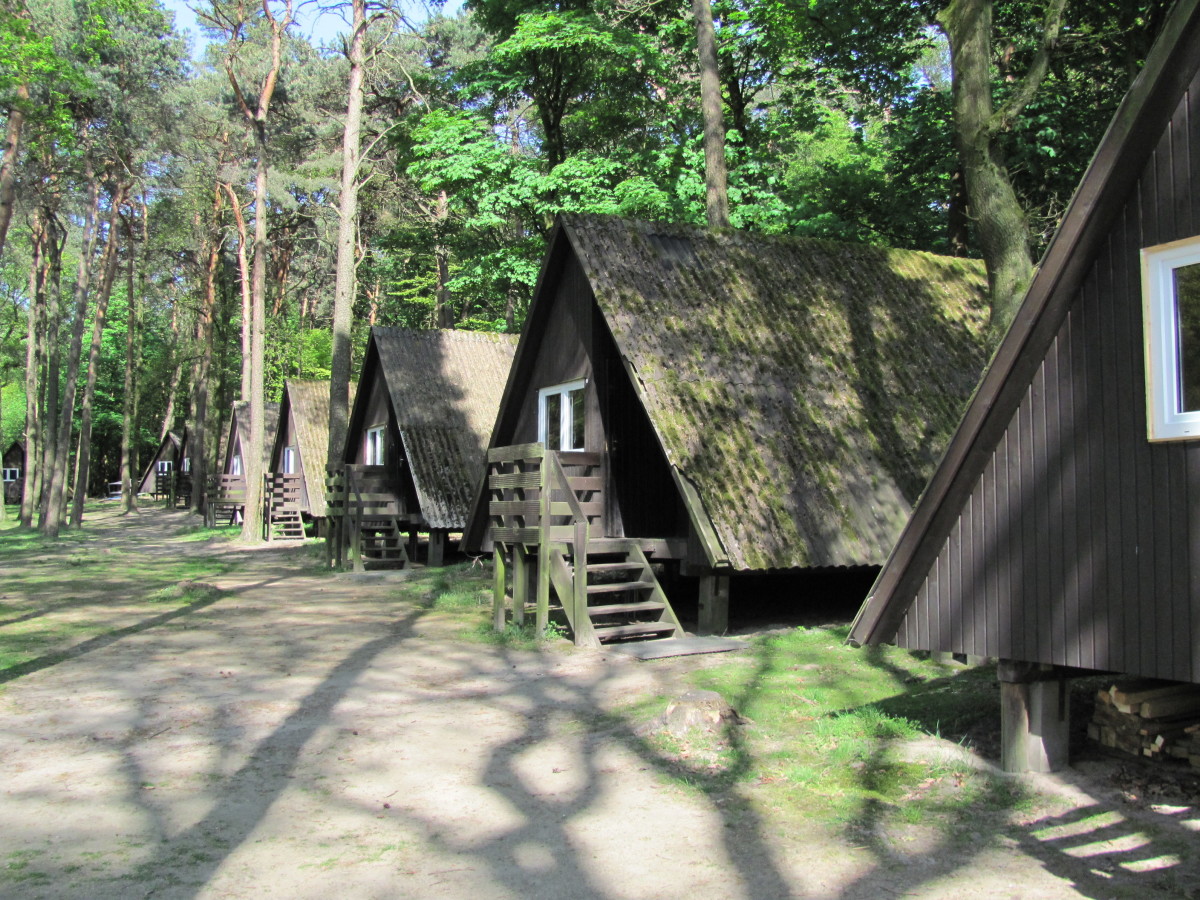
02.-04.09.20191. PhD Retreat
The first UnOCat retreat took place at Kinder- und Jugendcamp Haard e.V., Haardgrenzweg 200, Oer-Erkenschwick from September 2nd to September 4th.
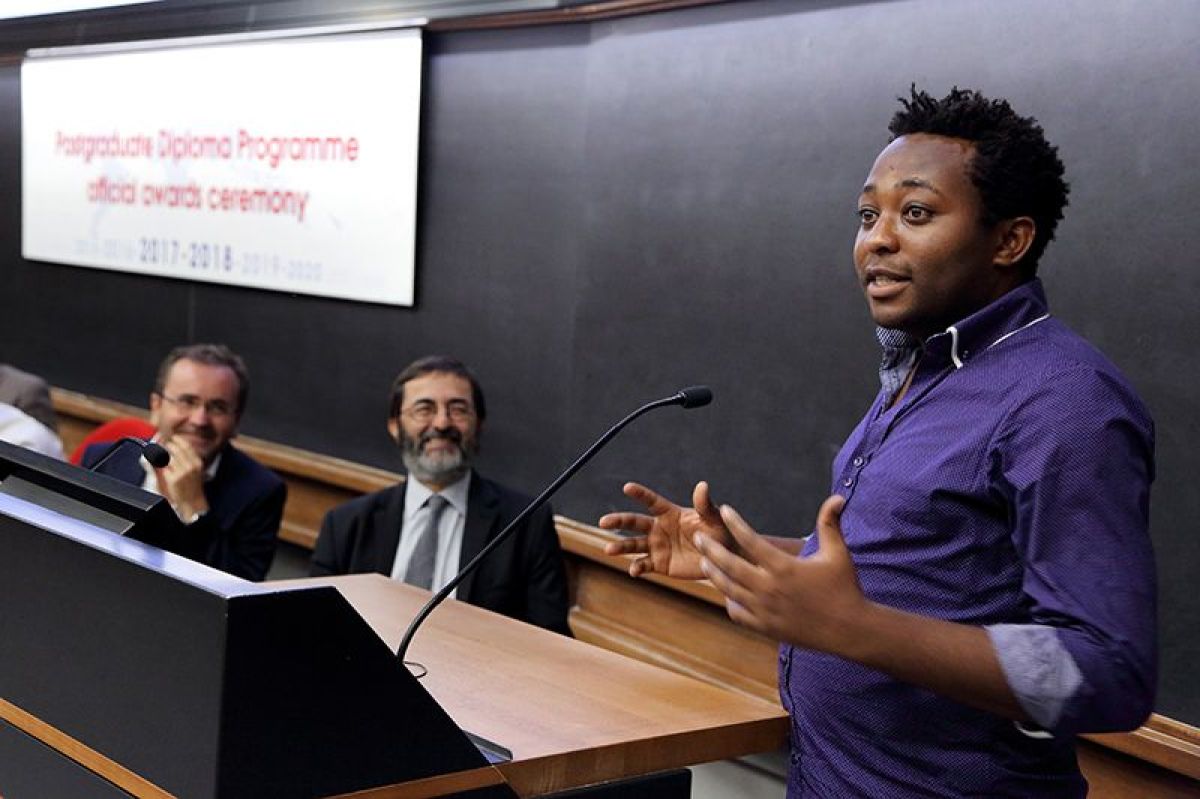
NATURE CAREER FEATUREMeeting the challenges of research across Africa
Dr. Stéphane Kenmoe, computational chemist at the University of Duisburg-Essen, talks about career implications of developing his research in Cameroon. His goal is "is to build an army of science champions — not just researchers but also journalists, actors and athletes — who will promote science wherever possible."
> more about: https://www.nature.com/articles/d41586-019-02311-2
> more about: Introducing ... Dr. Stéphane Kenmoe
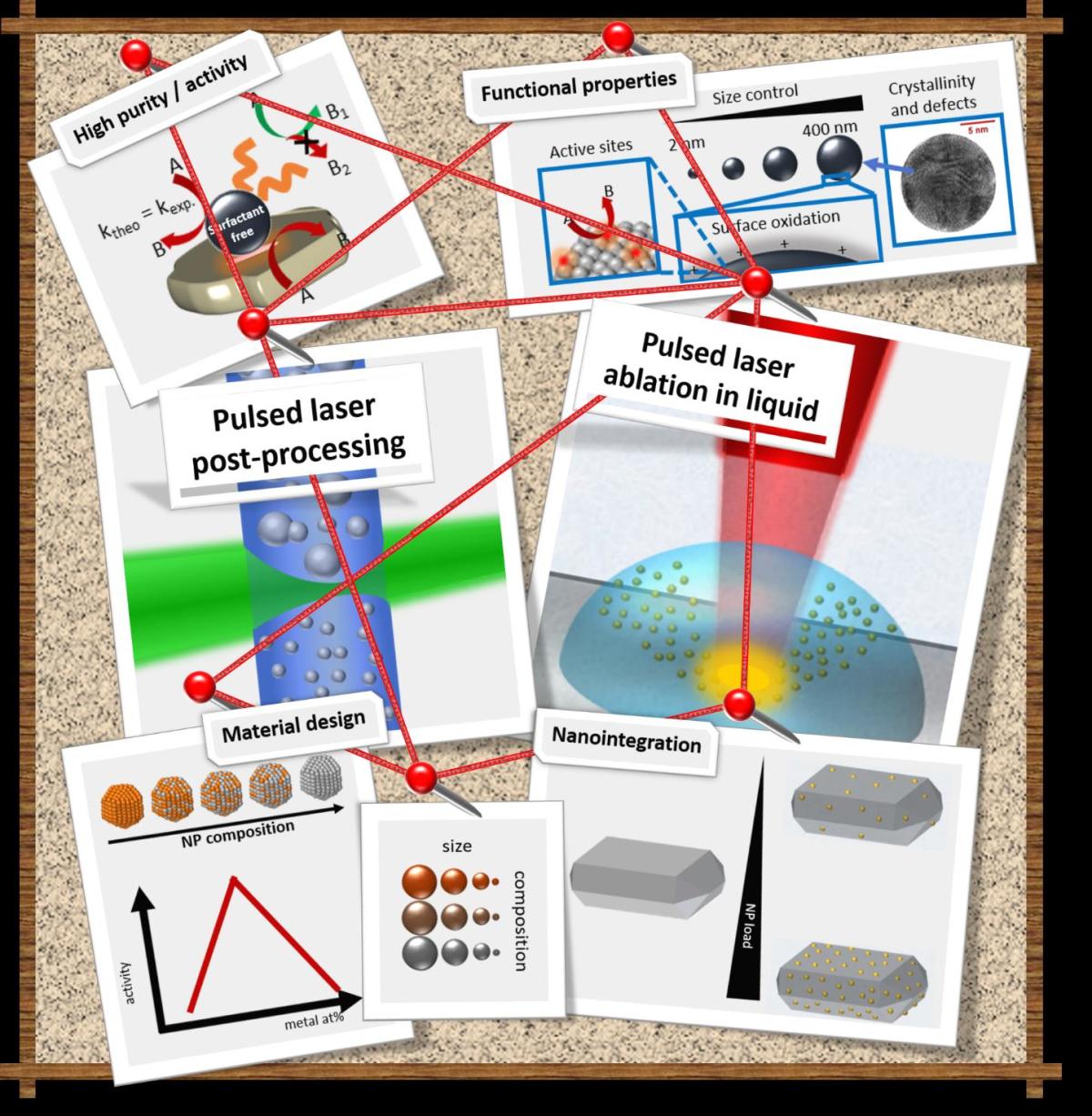
Publication alertPerspective of surfactant-free colloidal nanoparticles in heterogeneous catalysis
Due to material gaps and synthesis-related cross-correlations in heterogeneous catalysis, chemists and physicists are constantly motivated to develop novel catalyst preparation methods for independent control of morphology, size, and composition. Within this article, advances, opportunities, and the current limits of laser-based catalyst preparation technique, as well as synergies with conventional methods will be reviewed in terms of purity, particle size, morphology, composition, and nanoparticle-support interaction. It will be shown, that the surfactant-free particles represent ideal model materials to validate kinetic models and conduct parametric activity-studies by independent adjustment of functional properties like nanoparticle size, composition, and load. Consequently, the importance of transient plasma dynamics tailoring nanoparticle formation will be pointed out, comparing experimental studies with own calculations and novel simulations taken from literature. Finally, perspectives of surfactant-free colloidal nanoparticles for unrevealing active sites in heterogeneous catalysts are presented.
Original publication
Reichenberger, S., Marzun, G., Barcikowski, S., Muhler, M.: Perspective of surfactant‐free colloidal nanoparticles in heterogeneous catalysis, ChemCatChem 2019, https://doi.org/10.1002/cctc.201900666
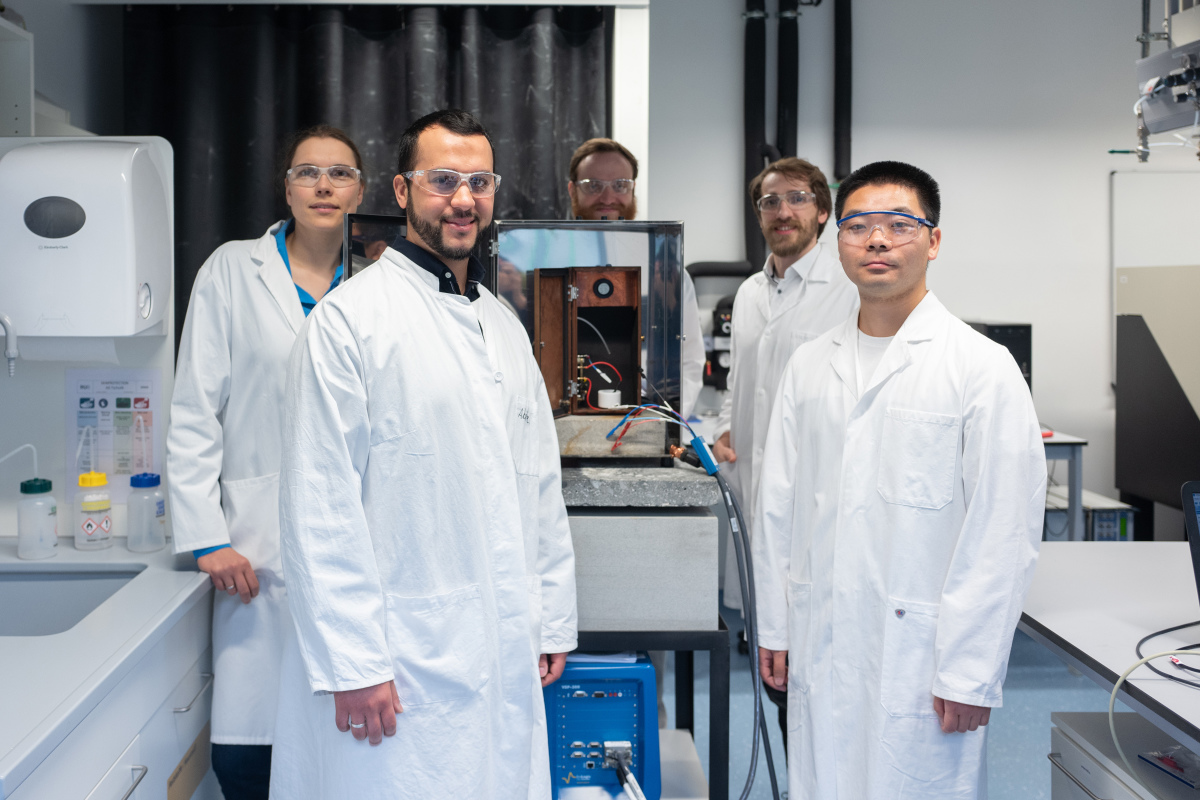
Publication alertHigh reaction rates even without precious metals
Non-precious metal nanoparticles could one day replace expensive catalysts for hydrogen production. However, it is often difficult to determine what reaction rates they can achieve, especially when it comes to oxide particles. This is because the particles must be attached to the electrode using a binder and conductive additives, which distort the results.
With the aid of electrochemical analyses of individual particles, researchers have now succeeded in determining the activity and substance conversion of nanocatalysts made from cobalt iron oxide – without any binders.
> more about: Press release Ruhr-University Bochum, 19.06.2019
#TwitterTakeover
Morning! I am Tong Li from Institute for Materials. Today, I will give a taste about what we are working on in my group @TemApt. #TwitterTakeover ^tl pic.twitter.com/SO9kDLAP0u
— Ruhr-Universität (@ruhrunibochum) 6. Juni 2019
We focus on the application of advanced #materials characterisation techniques for the development of new functional and structural materials. ^tl
— Ruhr-Universität (@ruhrunibochum) 6. Juni 2019
I am currently investigating a wide range of materials such as high-strength #TitaniumAlloys for #Aerospace applications, and #Catalysts for water splitting. ^tl
— Ruhr-Universität (@ruhrunibochum) 6. Juni 2019
Thanks to atom probe tomography! Now we can see individual chromium atoms (pink) and nanoprecipitates (green particles) in nickel #superalloys. ^tl pic.twitter.com/C1dCG9TYgz
— Ruhr-Universität (@ruhrunibochum) 6. Juni 2019
My student is preparing a sample for #AtomProbe tomography. It will take up to five hours. ^tl pic.twitter.com/SznfI2h0ca
— Ruhr-Universität (@ruhrunibochum) 6. Juni 2019
Discussing future projects with Alfred Ludwig and Janine Pfetzing at our new research building ZGH during coffee break. ^tl #KnowledgeNetworks pic.twitter.com/fh7FMJ9aob
— Ruhr-Universität (@ruhrunibochum) 6. Juni 2019
Extremely insightful meeting with Kristina @TschulikGroup from @SolvationSci about how to use atom probe tomography in field of #chemistry #knowledgenetworks ^tl pic.twitter.com/AZGdipagoE
— Ruhr-Universität (@ruhrunibochum) 6. Juni 2019
Kick-off meeting with Ulf-Peter Apfel to see how atom probe tomography can work for industrial catalysts #knowledgenetworks pic.twitter.com/39vuqb3Ucb
— Ruhr-Universität (@ruhrunibochum) 6. Juni 2019
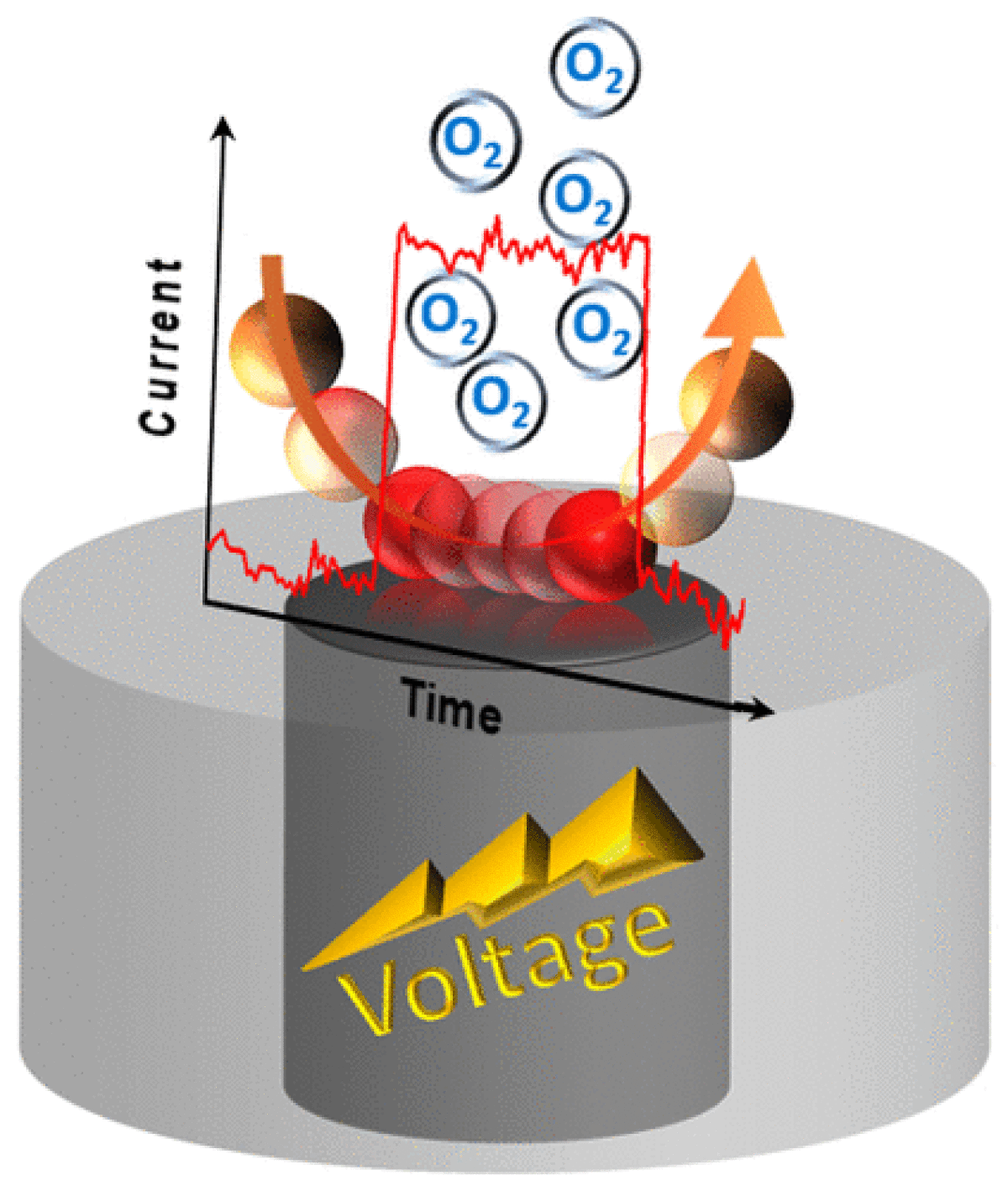
Publication alertIntrinsic Activity of Oxygen Evolution Catalysts Probed at Single CoFe2O4 Nanoparticles
Identifying the intrinsic electrocatalytic activity of nanomaterials is challenging, as their characterization usually requires additives and binders whose contributions are difficult to dissect. Herein, we use nano impact electrochemistry as an additive-free method to overcome this problem. Due to the efficient mass transport at individual catalyst nanoparticles, high current densities can be realized. High-resolution bright-field transmission electron microscopy and selected area diffraction studies of the catalyst particles before and after the experiments provide valuable insights in the transformation of the nanomaterials during harsh oxygen evolution reaction (OER) conditions. We demonstrate this for 4 nm sized CoFe2O4 spinel nanoparticles. It is revealed that these particles retain their size and crystal structure even after OER at current densities as high as several kA·m–2. The steady-state current scales with the particle size distribution and is limited by the diffusion of produced oxygen away from the particle. This versatilely applicable method provides new insights into intrinsic nanocatalyst activities, which is key to the efficient development of improved and precious metal-free catalysts for renewable energy technologies.
Original publication
El Arrassi, A., Liu, Z., Evers, M.V., Blanc,N., Bendt, G., Saddeler, S., Tetzlaff, D., Pohl, D., Damm, C., Schulz, S., Tschulik, K.: Intrinsic Activity of Oxygen Evolution Catalysts Probed at Single CoFe2O4 Nanoparticles, Journal of the American Chemical Society 2019, https://doi.org/10.1021/jacs.9b04516
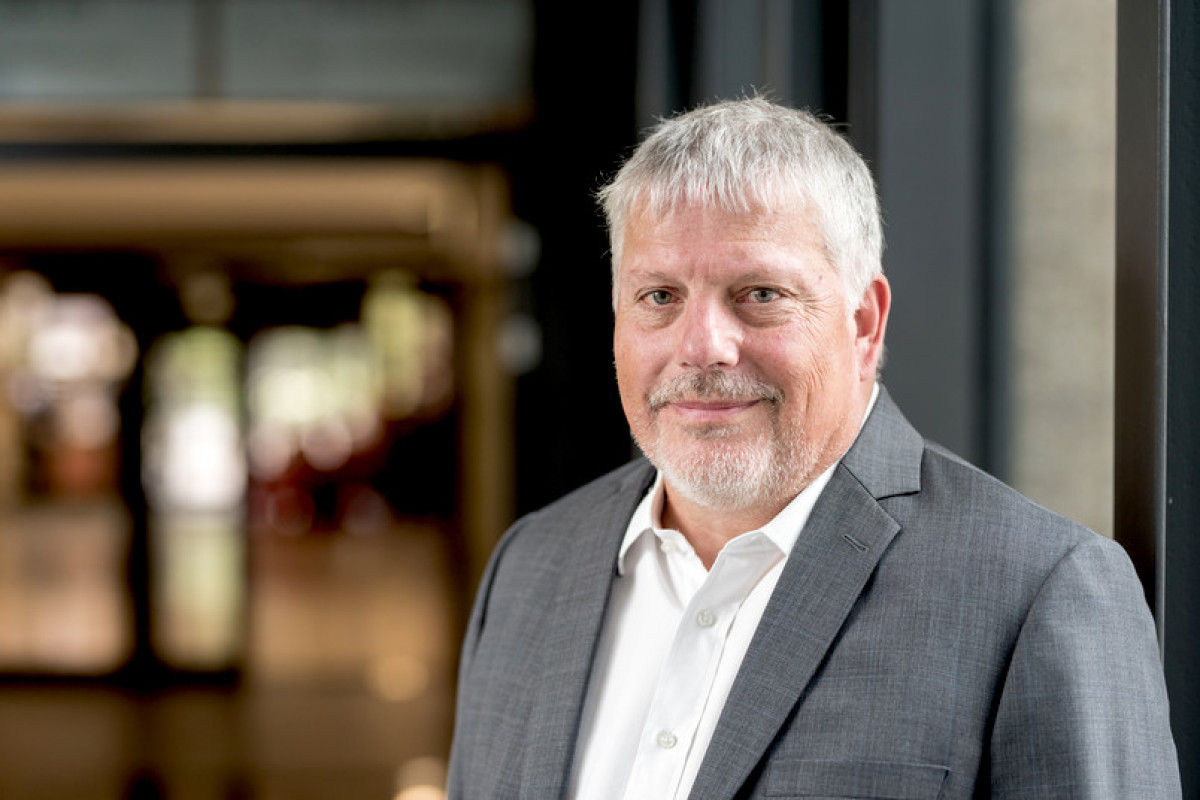
Giulio Milazzo Prize of BESProf. Dr. Wolfgang Schuhmann honored for his research
The Bioelectrochemical Society (BES) honored the research work of Prof. Dr. Wolfgang Schuhmann, Ruhr-University Bochum, with the Giulio Milazzo Price at the biannual BES Symposium 2019 in Limerick, Ireland, where he gave the "Giulio Milazzo Prize" lecture.
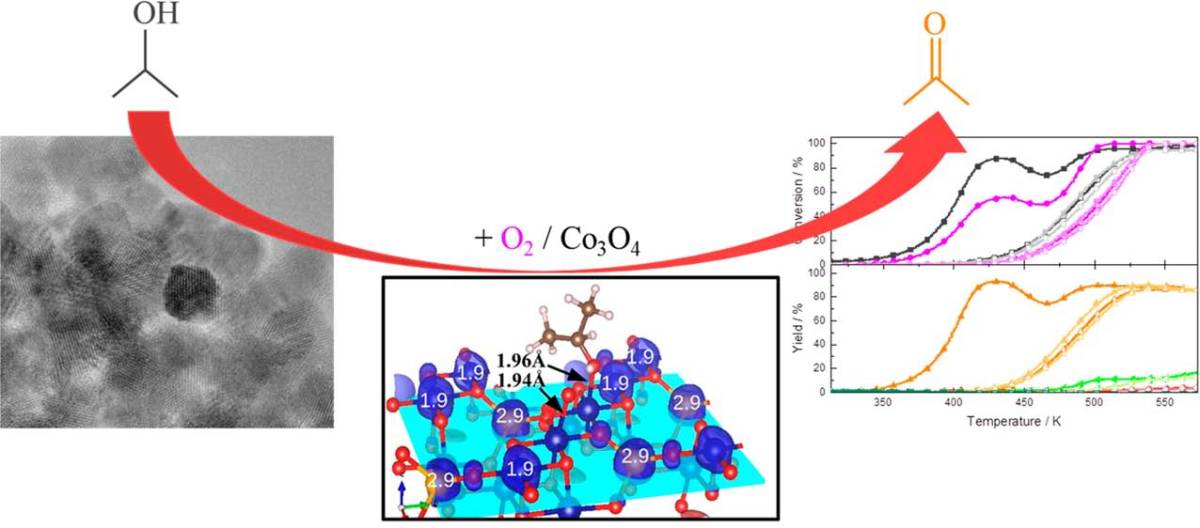
Publication alertSelective 2‑Propanol Oxidation over Unsupported Co3O4 Spinel Nanoparticles: Mechanistic Insights into Aerobic Oxidation of Alcohols
Crystalline Co3O4 nanoparticles with a uniform size of 9 nm as shown by XRD and TEM were synthesized by thermal decomposition of cobalt acetylacetonate in oleylamine and applied in the oxidation of 2-propanol after calcination. The catalytic properties were derived under continuous flow conditions as a function of temperature up to 573 K in a fixed-bed reactor at atmospheric pressure. Temperature-programmed oxidation, desorption (TPD), surface reaction (TPSR), and 2-propanol decomposition experiments were performed to study the interaction of 2-propanol and O2 with the exposed spinel surfaces. Co3O4 selectively catalyzes the oxidative dehydrogenation of 2-propanol, yielding acetone and H2O and only to a minor extent the total oxidation to CO2 and H2O at higher temperatures. The high catalytic activity of Co3O4 reaching nearly full conversion with 100% selectivity to acetone at 430 K is attributed to the high amount of active Co3+ species at the catalyst surface as well as surface-bound reactive oxygen species observed in the O2 TPD, 2-propanol TPD, TPSR, and 2-propanol decomposition experiments. Density functional theory calculations with a Hubbard U term support the identification of the 5-fold-coordinated octahedral surface Co5c3+ as the active site, and oxidative dehydrogenation involving adsorbed atomic oxygen was found to be the energetically most favored pathway. The consumption of surface oxygen and reduction of Co3+ to Co2+ during 2-propanol oxidation derived from X-ray absorption spectroscopy and X-ray photoelectron spectroscopy measurements before and after reaction and poisoning by strongly bound carbonaceous species result in the loss of the low-temperature activity, while the high-temperature reaction pathway remained unaffected.
Original publication
Anke, S., Bendt, G., Sinev, I., Hajiyani, H., Antoni, H., Zegkinoglou, I., Jeon, H., Pentcheva, R., Roldan Cuenya, B., Schulz, S., Muhler, M.: Selective 2‑Propanol Oxidation over Unsupported Co3O4 Spinel Nanoparticles: Mechanistic Insights into Aerobic Oxidation of Alcohols, ACS Catalysis 2019, 9, 5974-5985.
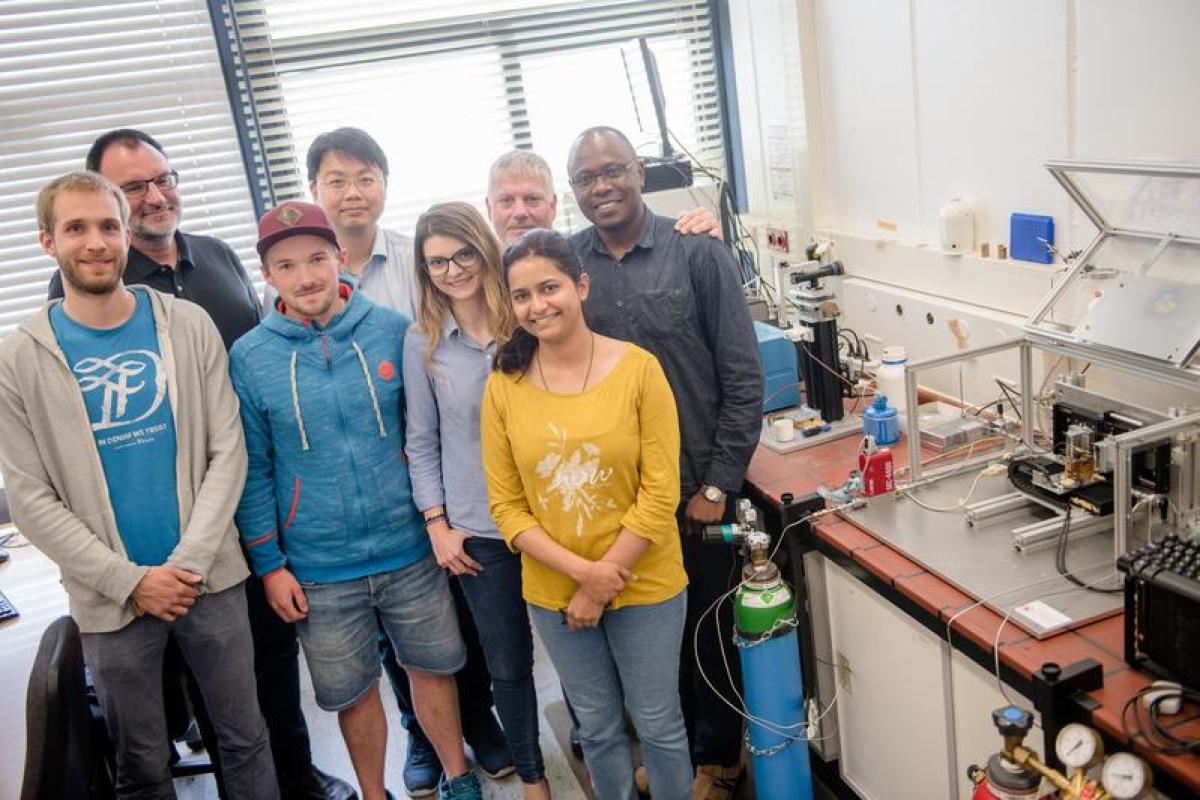
Publication alertLife cycle of tiny catalyst particles observed
Individual nanoparticles are very difficult to investigate, because they are extremely small. But that is the goal of the scientists to later be able to customise their properties. The new approach: 'particle at a stick'.
> more about: Press release idw, 03.05.2019
> more about: Press release Ruhr-University Bochum, 03.05.2019
Original publication
Harshitha Barike Aiyappa, Patrick Wilde, Thomas Quast, Justus Masa, Corina Andronescu, Yen-Ting Chen, Martin Muhler, Roland A. Fischer, Wolfgang Schuhmann: Oxygen evolution electrocatalysis of a single MOF‐derived composite nanoparticle on the tip of a nanoelectrode, Angewandte Chemie International Edition 2019, DOI: 10.1002/anie.201903283

International Bunsen-Discussion-Meeting 2019, Taormina, ItalyPoster award for Hamidreza Hajiyani
Dr. Hamidreza Hajiyani won the poster award at the International Bunsen-Discussion-Meeting "Fundamentals and Applications of (Photo)Electrolysis for Efficient Energy Storage" (01.-05.04.2019, Taormina , Italy) for his contribution "Why Tin-doping enhances the efficiency of Hematite photoanodes for water splitting".
The publication has also been selected as the cover page of Advanced Functional Materials.

Catalysts for controlled cascade reactions ERC Advanced Grant
Prof. Dr. Wolfgang Schuhmann received an European Research Council (ERC) Advanced Grant to study the conversion of harmful gases into useful basic chemicals on an industrial scale. For this purpose, he is getting 2.5 Mio. € for the next 5 years.
> more about: Press release Ruhr-University Bochum, 28.03.2019
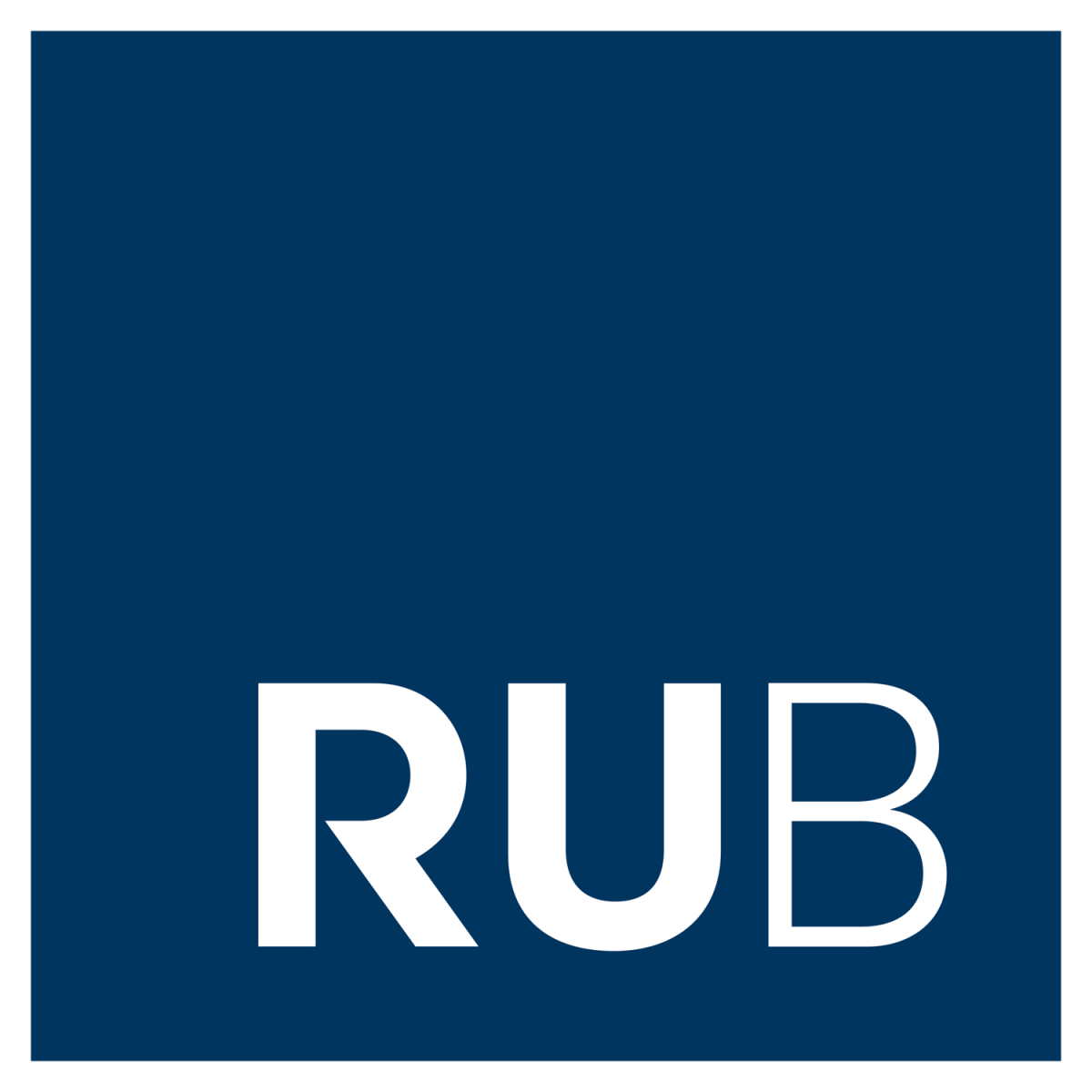
07.03.2019First UnOCat Assembly
Our first assembly of the CRC/TRR 247 graduate school UnOCat "Understanding Oxidation Catalysis" took place at the RUB on 7th of March.
Doctoral researchers in CRC/TRR 247 discussed their work and elected Anna Rabe as their PhD representative as well as Steven Angel as her deputy.

Publication alertSpray‐Flame‐Synthesized LaCo1−xFexO3 Perovskite Nanoparticles as Electrocatalysts for Water and Ethanol Oxidation
Spray-flame synthesized LaCo1-xFexO3 perovskites show promising electrocatalytic activity towards the oxygen evolution reaction and ethanol electrooxidation. The selectivity of the ethanol oxidation reaction is influenced by the Fe content, with acetic aldehyde being detected on Fe rich perovskites while acetate is generated on the Fe free catalysts up to potentials of 1.7 V vs. RHE.
> One of the three winners of the „CENIDE Best Paper Award“ 2019 (Press release 14.11.2019)
Original publication
Alkan, B., Cychy, S., Varhade, S., Muhler, M., Schulz, C., Schuhmann, W., Wiggers, H., Andronescu, C.: Spray‐Flame‐Synthesized LaCo1−xFexO3 Perovskite Nanoparticles as Electrocatalysts for Water and Ethanol Oxidation, ChemElectroChem 2019, 6, 1-10.
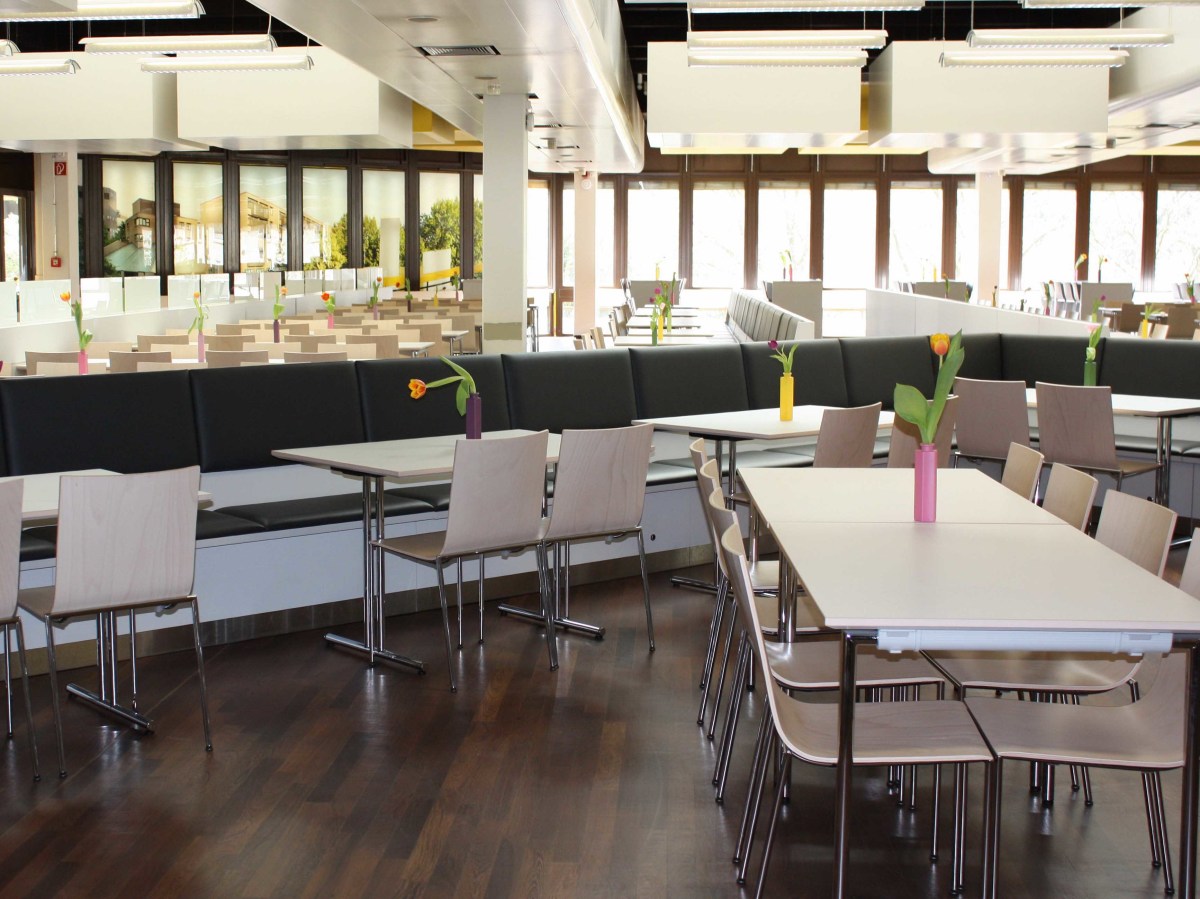
11.02.2019EMPOWER dinner for female early career scientists
On 11th of February, the international day of women and girls in science, young female scientists of CRC/TRR 247 met in Essen for an informal networking event. Together, they discussed the CRC/TRR 247 support of female scientists in their academic qualifications and career developments.

Publication alertSynergistic effects of Mo2C‐NC@FexCoy core‐shell nanoparticles in electrocatalytic overall water splitting reaction
The scientists report on the synthesis of bimetallic CoxFey alloy nanoparticles encapsulated in an N‐doped graphene shell containing molybdenum carbide (Mo2C) nanoparticles, which are obtained by the pyrolysis of cobalt ferrite CoxFe3‐xO4 nanoparticles coated by molybdic acid‐cross‐linked melamine‐formaldehyde (MF) resin. Molybdic acid not only serves as precursor for the formation of highly dispersed Mo2C nanoparticles in the N‐doped graphene shell but also enhances the thermal stability of the organic shell, resulting in the formation of smaller CoxFey cores. The formation of Mo2C nanoparticles in the graphene shell is promoted by the cobalt ferrite core. Interestingly, the synergistic presence of Mo2C nanoparticles not only enhances the HER activity of the material, but also renders a partial breakage of the graphene shell which increases the surface concentration of OER active Co and therefore enhances the OER activity. The as‐prepared TMs‐based materials serve as bi‐functional catalysts for the overall water splitting and exhibit improved electrocatalytic performances compared to standard cells based on precious metals, with potentials of 1.53 V and 1.60 V at 10 mA cm‐2 and 20 mA cm‐2, respectively.
Original publication
Wang, S., Bendt, G., Saddeler, S., Schulz, S.: Synergistic Effects of Mo2C‐NC@CoxFey Core–Shell Nanoparticles in Electrocatalytic Overall Water Splitting Reaction, Energy Technology 2019, 7, DOI: 10.1002/ente.201801121.
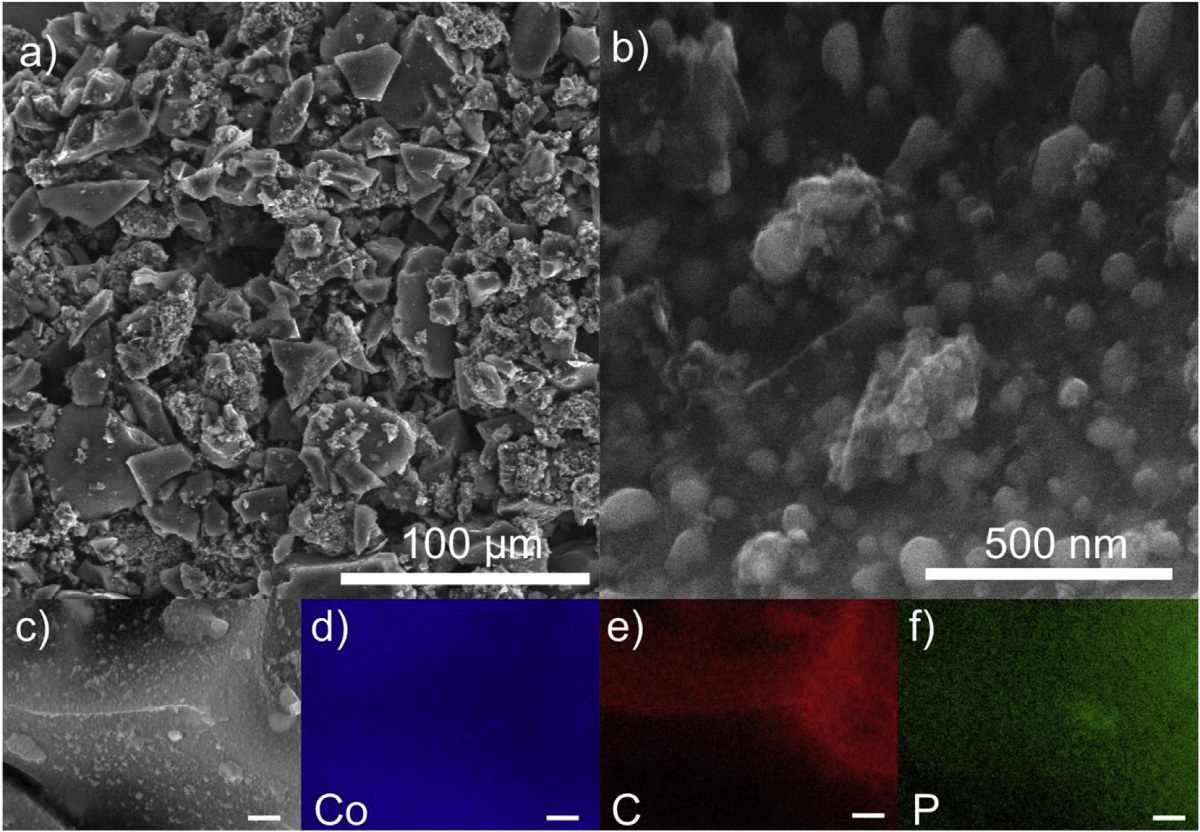
Publication alertCobalt metalloid and polybenzoxazine derived composites for bifunctional oxygen electrocatalysis
The development of bifunctional oxygen electrodes is a key factor for the envisaged application of rechargeable metal-air batteries. In this work, we present a simple procedure based on pyrolysis of polybenzoxazine/metal metalloid nanoparticles composites into efficient bifunctional oxygen reduction and oxygen evolution electrocatalysts. This procedure generates nitrogen-doped carbon with embedded metal metalloid nanoparticles exhibiting high activity towards both, oxygen reduction and oxygen evolution, in 0.1 M KOH with a roundtrip voltage of as low as 0.81 V. Koutecký-Levich analysis coupled with scanning electrochemical microscopy reveals that oxygen is preferentially reduced in a 4e− transfer pathway to hydroxide rather than to hydrogen peroxide. Furthermore, the polybenzoxazine derived carbon matrix allows for stable catalyst fixation on the electrode surface, resulting in unattenuated activity during continuous alternate polarisation between oxygen evolution at 10 mA cm−2 and oxygen reduction at −1.0 mA cm−2.
Original publication
Barwe, S., Andronescu, C., Engels, R., Conzuelo, F., Seisel, S., Wilde, P., Chen, Y.T., Masa, J., Schuhmann, W.: Cobalt metalloid and polybenzoxazine derived composites for bifunctional oxygen electrocatalysis, Electrochimica Acta 2019, 297, 1042-1051.
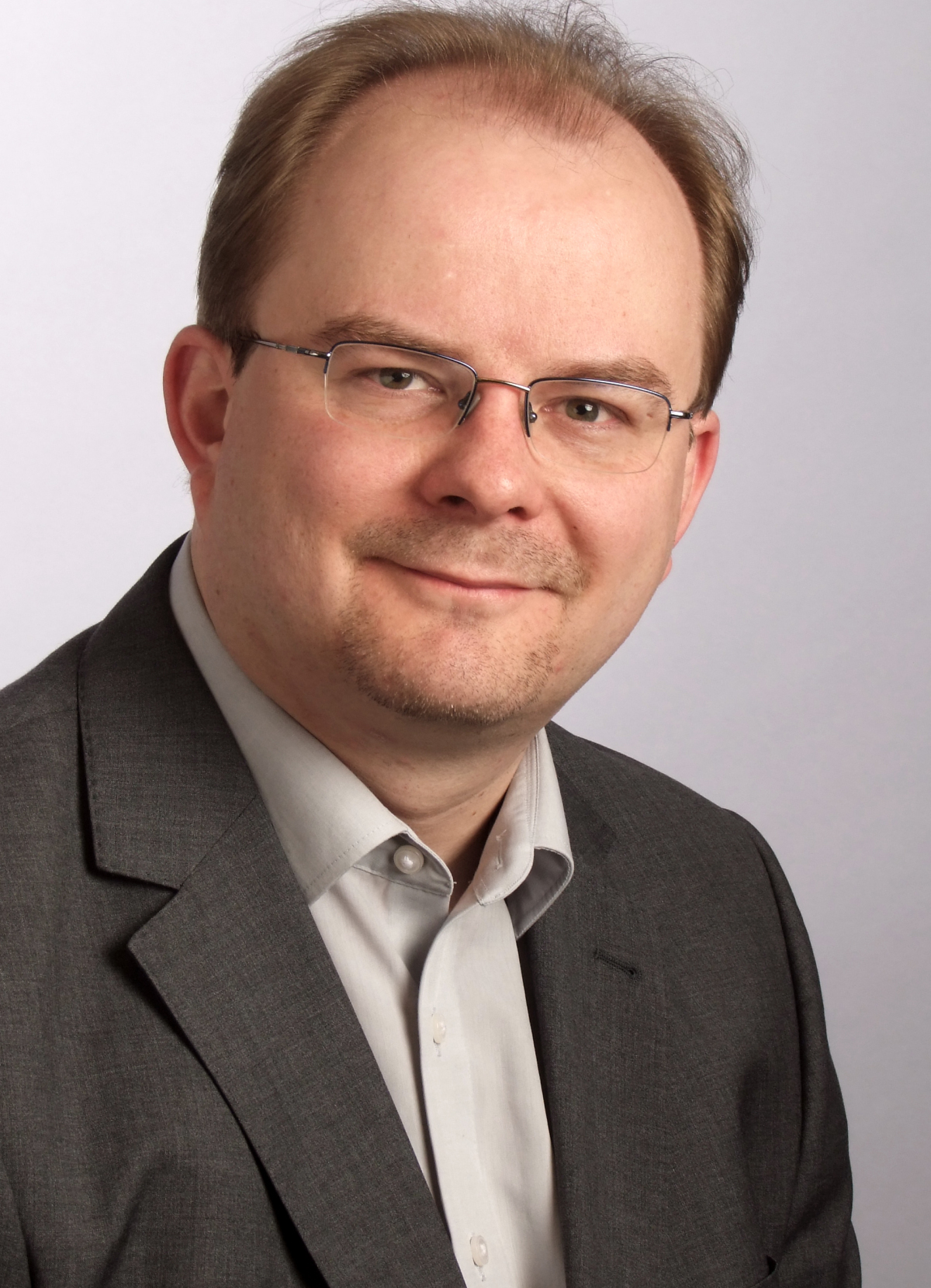
New CRC/TRR 247 projectProf. Dr. Wolfgang Kleist joined CRC/TRR 247
Prof. Dr. Wolgang Kleist leads the new project C6 "Metal‐organic frameworks as molecularly defined single‐site catalysts and precursor species for bimetallic Co/Fe materials in liquid phase oxidation reactions" that aims at the development of single‐site catalysts based on metal‐organic frameworks (MOFs) containing well‐defined Co and Fe species in their framework structures.


